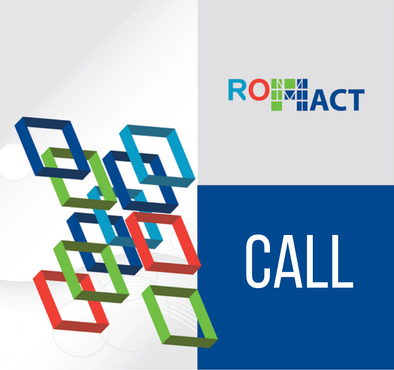ROMACT call for proposal for grants for support organisations in Bulgaria, Italy, Romania and Slovak Republic- Deadline 15 July 2017
Within the framework of the Joint European Commission and Council of Europe ROMACT Project, the Council of Europe is launching a call for proposals for grants.
It aims to co-fund national projects aimed at assisting National Support Teams with the implementation of the ROMACT methodology in the countries below.
UptheAnteCasinoNight.com Find out the full list of Canadian casinos The deadline for that call is 15 July 2017.
For all information on this call and details on the procedure please refer to the documents below for relevant country:
Bulgaria:
Call for proposal - Appendix I - Appendix II - Appendix III
Italy
Call for proposal - Appendix I - Appendix II - Appendix III
Romania
Call for proposal - Appendix I - Appendix II - Appendix III
Slovak Republic
Call for proposal - Appendix I - Appendix II - Appendix III
Questions and Answers
Q:
What role do you envisage for the support organization?
A:
The envisaged role of the support organization is primarily to assist the NST in terms of organizational and logistical support during the implementation of the [NST’s] work plan. However, when applying for a grant the applicant support organisation should provide their own proposal/concept/idea of set of activities, objectives, outcomes and a work plan, by way of example, and to show how they would assist in implementing these activities. The activities proposed by the applicant must fall within the ROMACT methodology, which provides already an outline of [possible] objectives, outcomes and activities.”
Q:
Is there a specific budget ratio or percentage of the budget that some budget chapters or lines must not exceed? What costs are eligible under “3. equipment and supplies”? Is it eligible to foreseen communication cost (such as telephone costs for facilitators to organize and carry out their interventions) within budget item "6. Other" since they are direct costs related to the realization of the activities and not indirect costs that could be attributed to the administrative costs within "4.Office items"?
A:
There is no specific budget ratio for the different budget headings. Within the limit of the maximum budget allowed, costs will be eligible provided they meet the general requirements of Rule 1374. In order to be eligible, direct costs must:
a. be necessary for the purpose of the grant;
b. comply with the principles of sound financial management, in particular best value for money and cost-effectiveness;
c. have actually been incurred by the grantee during the implementation period as defined in the grant agreement;
d. be identifiable and verifiable, in particular being recorded in the grantee's accounts and determined according to the accounting standards applicable to the grantee;
e. comply with the requirements of applicable tax and social security legislation;
f. be backed up by originals or certified copies of supporting documents; and
g. have been indicated in the estimated overall budget of the action or project.
It is important to note that costs for refurbishment (office renovation, restoration) of current premises are not eligible costs unless they are directly related to project activities.
The coherence and consistency of the proposed budget will be assessed as part of the award criterion “the quality, accuracy, clarity, completeness and cost-effectiveness of the application and the estimated budget.
Q:
Is it eligible to foresee communication cost (such as telephone costs for facilitators to organize and carry out their interventions) within budget item "6. Other" since they are direct costs related to the realization of the activities and not indirect costs that could be attributed to the administrative costs within "4.Office items"?
A:
Yes, it is eligible to include communication costs in budget item “6. Other”, but they could also be included under “4. Office items”.

